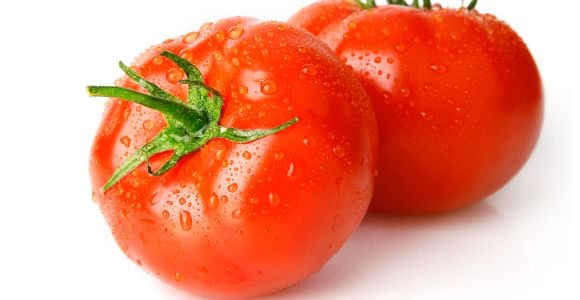Lycopene is a carotinoid, a pigment that is found in tomatoes, red carrots, watermelon, papaya, pink grapefruit, guava and certain other red colored fruits and vegetables. Lycopene is known to be a potent cancer-fighting nutrient that should be included as part of a balanced diet.
The Chemistry of Lycopene
Lycopene has strong antioxidant properties, which means that it helps to remove free radicals from your body. Free radicals can harm cells and DNA and are thought to cause many different types of cancers, and other diseases as well as some signs of aging. Free radicals can result from smoking, alcohol, excessive sun exposure and exposure to pollution. They are also a byproduct of natural metabolic functions.
As lycopene isn't used by the body in other ways, it is left to mop up free radicals. For example, lycopene can collect in the tissues of the lungs, and '"quench" free radicals there, stopping them before they can damage the cells. Lycopene is thought to be particularly effective in preventing prostate cancer, but it may also be effective in preventing lung, stomach, breast and endometrial cancers. Lycopene may be able to provide internal protection from damaging sun radiation and thus helps to prevent sunburn and skin cancer. It is also thought to help prevent heart disease.
Lycopene is non-toxic and although it is not an essential nutrient for human life, it doesn't appear to do much harm in higher doses. At worst, people who have excess lycopene in their blood will turn an orange color, but limiting consumption generally returns the skin to normal in a few weeks. There have been a few studies which have been said to disprove the link between lower cancer risk and high consumption of lycopene, so there is not yet a complete consensus on its properties. However, as it does little to no harm, and most studies seem to show that it does lower the risk of cancer, it is generally promoted as a highly beneficial nutrient.
Including Lycopene in the Diet
Lycopene is found in many red colored fruits and vegetables and these should be incorporated into a balanced diet to take advantage of their cancer fighting properties. Tomatoes are the easiest method of consuming lycopene. While you can eat raw tomatoes in salads or sandwiches, cooking tomatoes releases up to three times more lycopene for use within the body. Therefore, adding concentrated tomato sauces, pastes or a tomato based pasta sauce to a meal will provide even more lycopene than raw tomatoes do. Lycopene is fat soluble, so it can be more easily absorbed in the presence of oil. Lycopene is also found in fruits that can be eaten fresh like watermelon, blood oranges, or pink grapefruit, or made into jams, such as guava. It is also found in rose hips which can be brewed as a tea.
Lycopene is an excellent and healthy addition to the diet and may have strong anti-cancer properties. Eating more red colored fruits and vegetables, particularly tomatoes, is the best way to increase your consumption of lycopene and take advantage of its benefits.



